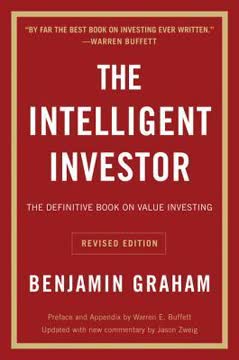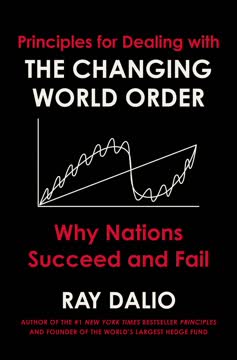نکات کلیدی
1. تحلیل بنیادی: کلید سرمایهگذاری هوشمندانه
"تحلیل بنیادی روش کلاسیک بررسی شرکتها و سرمایهگذاریها به دلایل مختلف است، از جمله اینکه: بر اساس واقعیت است، نه نظر."
درک اصول اولیه. تحلیل بنیادی فرآیند ارزیابی سلامت مالی، موقعیت رقابتی و چشمانداز رشد یک شرکت برای تعیین ارزش ذاتی آن است. برخلاف رویکردهای سفتهبازی، بر دادههای ملموس تمرکز دارد نه احساسات بازار یا نمودارهای فنی.
اجزای کلیدی تحلیل بنیادی:
- تحلیل صورتهای مالی (صورت سود و زیان، ترازنامه، صورت جریان نقدی)
- تحلیل نسبتها (سودآوری، نقدینگی، توانایی پرداخت بدهی، کارایی)
- عوامل کیفی (کیفیت مدیریت، مزایای رقابتی، روندهای صنعتی)
- روشهای ارزشگذاری (جریان نقدی تنزیلشده، تحلیل مقایسهای)
با تسلط بر این عناصر، سرمایهگذاران میتوانند تصمیمات آگاهانهای بر اساس ارزش واقعی شرکت بگیرند، نه روندهای گذرا یا احساسات بازار.
2. صورتهای مالی: نقشه راه سرمایهگذار
"همانطور که میخواهید بدانید در غذایی که میخواهید بخورید چه چیزی وجود دارد، میخواهید بدانید در سرمایهگذاری که قصد اضافه کردن به سبد خود دارید چه چیزی وجود دارد."
صورت سود و زیان. این سند مهم سودآوری یک شرکت را در یک دوره خاص نشان میدهد. شامل:
- درآمد (خط بالا)
- هزینهها
- سود خالص (خط پایین)
ترازنامه. نمایی از وضعیت مالی شرکت در یک زمان خاص ارائه میدهد:
- داراییها (آنچه شرکت مالک آن است)
- بدهیها (آنچه شرکت بدهکار است)
- حقوق صاحبان سهام (تفاوت بین داراییها و بدهیها)
صورت جریان نقدی. جریان نقدی واقعی وارد و خارج از کسبوکار را پیگیری میکند:
- فعالیتهای عملیاتی
- فعالیتهای سرمایهگذاری
- فعالیتهای تأمین مالی
درک این صورتها به سرمایهگذاران امکان میدهد تا سلامت مالی، کارایی و توانایی شرکت در تولید سود و نقدینگی را ارزیابی کنند.
3. نسبتها و ارزشگذاریها: رمزگشایی ارزش شرکت
"حتی اگر یک شرکت عملکرد ضعیفی داشته باشد، سهام میتواند سرمایهگذاری خوبی باشد اگر اخبار بد در قیمت منعکس شده باشد."
نسبتهای مالی کلیدی:
- نسبتهای سودآوری (مانند ROE، ROA، حاشیه سود)
- نسبتهای نقدینگی (مانند نسبت جاری، نسبت سریع)
- نسبتهای توانایی پرداخت بدهی (مانند نسبت بدهی به حقوق صاحبان سهام، پوشش بهره)
- نسبتهای کارایی (مانند گردش موجودی، گردش دارایی)
معیارهای ارزشگذاری:
- نسبت قیمت به درآمد (P/E)
- نسبت قیمت به ارزش دفتری (P/B)
- نسبت قیمت به فروش (P/S)
- ارزش بنگاه به EBITDA (EV/EBITDA)
این نسبتها و معیارها به سرمایهگذاران کمک میکنند تا شرکتها را در یک صنعت مقایسه کنند و ارزیابی کنند که آیا یک سهام بیش از حد ارزشگذاری شده یا کمتر از حد ارزشگذاری شده است. با این حال، تفسیر آنها در زمینه، با در نظر گرفتن استانداردهای صنعتی، مراحل رشد شرکت و شرایط کلی بازار بسیار مهم است.
4. جریان نقدی: شریان حیاتی کسبوکار
"نقدینگی نقدینگی است. یا آن را دارید یا ندارید."
درک جریان نقدی. در حالی که سود مهم است، جریان نقدی پادشاه است. یک شرکت میتواند سود گزارش کند اما همچنان با مشکلات جریان نقدی مواجه شود اگر نتواند پرداختها را جمعآوری کند یا هزینههای خود را بهطور مؤثر مدیریت کند.
معیارهای کلیدی جریان نقدی:
- جریان نقدی آزاد (FCF): جریان نقدی عملیاتی منهای هزینههای سرمایهای
- چرخه تبدیل نقدی: سرعت تبدیل سرمایهگذاریها به جریان نقدی
- بازده جریان نقدی بر سرمایهگذاری (CFROI): اندازهگیری نقدینگی تولید شده نسبت به سرمایهگذاری
تحلیل جریان نقدی به سرمایهگذاران کمک میکند تا توانایی شرکت در:
- تأمین مالی عملیات بدون تأمین مالی خارجی
- سرمایهگذاری در فرصتهای رشد
- پرداخت سود سهام یا خرید مجدد سهام
- مقاومت در برابر رکود اقتصادی
یک موقعیت قوی جریان نقدی اغلب نشاندهنده یک کسبوکار سالم و بهخوبی مدیریت شده با عملیات پایدار است.
5. مدیریت و حاکمیت شرکتی: ارزیابی رهبری
"اگر در یک شرکت سرمایهگذاری میکنید، هیئت مدیره نگهبان شماست."
ارزیابی کیفیت مدیریت:
- سابقه تحقق وعدهها
- همراستایی منافع با سهامداران
- شفافیت در ارتباطات
- توانایی تطبیق با شرایط متغیر بازار
عوامل حاکمیت شرکتی:
- استقلال و تنوع هیئت مدیره
- ساختارهای جبران خسارت اجرایی
- حقوق سهامداران
- شیوههای حسابداری و کنترلهای داخلی
حاکمیت خوب و مدیریت قوی برای موفقیت بلندمدت حیاتی هستند. سرمایهگذاران باید بیانیههای وکالت، گزارشهای سالانه و ارتباطات عمومی مدیریت را بررسی کنند تا کیفیت رهبری و تعهد شرکت به شیوههای اخلاقی را ارزیابی کنند.
6. تحلیل صنعت: درک چشمانداز رقابتی
"شرکتها نمیتوانند بهطور جداگانه تحلیل شوند، بلکه باید نسبت به همتایان خود بررسی شوند."
پنج نیروی پورتر:
- تهدید ورود تازهواردان
- قدرت چانهزنی تأمینکنندگان
- قدرت چانهزنی خریداران
- تهدید محصولات یا خدمات جایگزین
- رقابت بین رقبا
مراحل چرخه عمر صنعت:
- نوظهور
- رشد
- بلوغ
- افول
درک موقعیت یک شرکت در صنعت خود به سرمایهگذاران کمک میکند تا مزایای رقابتی، پتانسیل رشد و ریسکهای آن را ارزیابی کنند. عواملی که باید در نظر گرفته شوند شامل سهم بازار، قدرت قیمتگذاری، محیط نظارتی و اختلالات تکنولوژیکی هستند.
7. شاخصهای اقتصادی: هدایت بازار گستردهتر
"بازار سهام میتواند سیگنال اولیهای به شما بدهد که اقتصاد در سه تا شش ماه آینده به کجا میرود."
شاخصهای اقتصادی کلیدی:
- تولید ناخالص داخلی (GDP)
- نرخ بیکاری
- نرخ تورم
- نرخ بهره
- شاخص اعتماد مصرفکننده
مراحل چرخه کسبوکار:
- گسترش
- اوج
- انقباض
- رکود
شرایط اقتصادی میتواند بهطور قابلتوجهی بر عملکرد شرکت و قیمت سهام تأثیر بگذارد. سرمایهگذاران باید در نظر بگیرند که چگونه بخشها و صنایع مختلف در مراحل مختلف چرخه اقتصادی عمل میکنند. درک این روندهای گستردهتر به تصمیمگیریهای سرمایهگذاری آگاهانهتر و زمانبندی ورود و خروج از بازار کمک میکند.
8. جمعبندی: اتخاذ تصمیمات سرمایهگذاری آگاهانه
"تحلیل بنیادی به شما کمک میکند تا بر سرمایهگذاری در کسبوکارها تمرکز کنید، نه سهام."
فرآیند تصمیمگیری سرمایهگذاری:
- شناسایی سرمایهگذاریهای بالقوه از طریق غربالگری یا تحقیق
- تحلیل اصول بنیادی شرکت (صورتهای مالی، نسبتها، مدیریت)
- ارزیابی پویایی صنعت و موقعیت رقابتی
- در نظر گرفتن عوامل کلان اقتصادی و تأثیر آنها
- تعیین ارزش ذاتی با استفاده از روشهای مختلف ارزشگذاری
- مقایسه ارزش ذاتی با قیمت فعلی بازار
- تصمیمگیری برای خرید، نگهداری یا فروش
مدیریت ریسک:
- تنوعبخشی در بخشها و کلاسهای دارایی
- تعادل مجدد منظم سبد
- تعیین دستورات توقف ضرر یا توقفهای دنبالهدار
- نظارت و ارزیابی مداوم سرمایهگذاریها
تحلیل بنیادی چارچوبی برای اتخاذ تصمیمات سرمایهگذاری منطقی و مبتنی بر داده ارائه میدهد. با درک کامل مالیات شرکت، موقعیت رقابتی و چشمانداز رشد در زمینه صنعت و اقتصاد گستردهتر، سرمایهگذاران میتوانند سبدی از شرکتهای با کیفیت بالا با ارزشگذاریهای معقول بسازند. این رویکرد، اگرچه موفقیت را تضمین نمیکند، بهطور قابلتوجهی شانس دستیابی به اهداف سرمایهگذاری بلندمدت را بهبود میبخشد.
آخرین بهروزرسانی::
FAQ
1. What’s "Fundamental Analysis for Dummies" by Matthew Krantz about?
- Comprehensive investing guide: The book introduces readers to fundamental analysis, teaching how to evaluate a company’s financial health and intrinsic value using financial statements, industry trends, and economic factors.
- Step-by-step approach: It covers everything from reading income statements and balance sheets to advanced valuation techniques like discounted cash flow (DCF).
- Practical tools and examples: Real-world case studies, financial ratios, and stock screening tools are provided to help readers apply concepts in practice.
- Target audience: Aimed at investors seeking to make informed stock decisions and anyone interested in understanding business fundamentals.
2. Why should I read "Fundamental Analysis for Dummies" by Matthew Krantz?
- Avoid costly mistakes: The book helps investors steer clear of hype-driven or risky stocks by focusing on solid financial analysis and red flag identification.
- Build a strong foundation: Readers gain the skills to analyze earnings, cash flow, dividends, and management quality, which are crucial for long-term investment success.
- Improve decision-making: It teaches how to combine fundamental and technical analysis for better timing and smarter buy/sell decisions.
- Long-term perspective: Emphasizes investing as buying a business, not speculating on price movements, leading to better risk management.
3. What are the key takeaways from "Fundamental Analysis for Dummies" by Matthew Krantz?
- Focus on fundamentals: Prioritize company financials, management quality, and industry context over market speculation or trends.
- Use financial statements and ratios: Mastery of income statements, balance sheets, cash flow statements, and key ratios is essential for sound analysis.
- Valuation discipline: Learn to value companies using methods like DCF and avoid overpaying for stocks.
- Risk awareness: Recognize the limitations of fundamental analysis, including timing challenges and the need for ongoing vigilance.
4. What is fundamental analysis according to "Fundamental Analysis for Dummies" by Matthew Krantz?
- Definition and purpose: Fundamental analysis is the process of evaluating a company’s financial statements and other data to make informed investment decisions.
- Beyond the numbers: It includes assessing industry trends, management effectiveness, and macroeconomic factors for a holistic view.
- Intrinsic value focus: The goal is to determine a company’s true worth, rather than relying on market sentiment or technical patterns.
- Long-term orientation: Encourages investors to think like business owners, focusing on sustainable value.
5. How does fundamental analysis in "Fundamental Analysis for Dummies" compare to other investment methods?
- Versus index investing: Index investors rely on diversification and market efficiency, while fundamental analysts seek undervalued stocks through deep research.
- Versus technical analysis: Technical analysis focuses on price patterns and timing, whereas fundamental analysis centers on company value and financial health.
- Complementary roles: The book suggests using fundamental analysis to decide "what" to buy and technical analysis for "when" to buy or sell.
- Risk and reward: Fundamental analysis aims for long-term gains, while other methods may prioritize short-term movements.
6. What are the key financial statements and ratios explained in "Fundamental Analysis for Dummies" by Matthew Krantz?
- Income statement: Reveals a company’s revenue, expenses, and profit, highlighting profitability over a period.
- Balance sheet: Details assets, liabilities, and equity, providing a snapshot of financial health.
- Cash flow statement: Tracks actual cash inflows and outflows, crucial for assessing liquidity and sustainability.
- Essential ratios: Includes price-to-earnings (P/E), return on equity (ROE), debt-to-equity, current ratio, and profit margins for benchmarking and analysis.
7. How does "Fundamental Analysis for Dummies" by Matthew Krantz explain discounted cash flow (DCF) analysis?
- Core valuation method: DCF estimates a company’s intrinsic value by forecasting future free cash flows and discounting them to present value.
- Step-by-step guidance: The book provides formulas, practical examples (e.g., Procter & Gamble), and online tools for performing DCF.
- Importance of assumptions: Emphasizes the need for careful judgment in estimating growth rates and discount rates.
- Application: DCF is used to determine if a stock is undervalued or overvalued relative to its future cash-generating potential.
8. What does "Fundamental Analysis for Dummies" by Matthew Krantz say about analyzing dividends and dividend yield?
- Dividends as real returns: Dividends are tangible cash payments and a significant part of total stock returns, often accounting for about a third.
- Dividend yield calculation: Yield is annual dividend divided by share price, indicating cash return per dollar invested.
- Dividend sustainability: The dividend payout ratio (dividends/earnings) helps assess if dividends are affordable; a ratio above 100% is a warning sign.
- Red flags: Unsustainable dividends may signal future cuts or financial trouble.
9. How does "Fundamental Analysis for Dummies" by Matthew Krantz recommend using annual reports (10-K) and proxy statements?
- Annual report (10-K): The 10-K is a comprehensive SEC filing with financial data, risk factors, management discussion, and auditor opinions—vital for analysis.
- Key sections: Focus on business descriptions, risk factors, footnotes, legal proceedings, and management’s discussion for forward-looking insights.
- Proxy statements: Review for board composition, executive compensation, related-party transactions, and shareholder proposals to assess governance.
- Red flags: Watch for restatements, auditor disagreements, and "going concern" warnings.
10. What advice does "Fundamental Analysis for Dummies" by Matthew Krantz give for evaluating management and corporate governance?
- Management quality matters: Assess the competence and integrity of the management team, as it directly impacts company performance.
- Board oversight: Scrutinize the board of directors and executive compensation for alignment with shareholder interests.
- Performance metrics: Use return on equity and return on assets to evaluate management effectiveness.
- Governance issues: Look for excessive CEO pay, related-party transactions, and governance red flags in proxy statements.
11. How does "Fundamental Analysis for Dummies" by Matthew Krantz address industry and economic analysis?
- Industry context: Analyze companies relative to their industry peers using classification systems like GICS.
- Economic cycles: Understand how business cycle phases (expansion, peak, contraction, recovery) affect company earnings and valuations.
- Sector performance: Monitor sector fundamentals and stock performance to anticipate economic shifts and adjust strategies.
- Macro indicators: Track GDP, inflation, interest rates, and leading indicators for broader context.
12. What are the top 10 fundamental analysis checks recommended in "Fundamental Analysis for Dummies" by Matthew Krantz?
- Quality of earnings: Compare cash from operations to net income to ensure earnings are backed by real cash flow.
- Cash and debt levels: Assess how much cash a company has and its debt obligations to gauge financial health.
- Valuation discipline: Avoid overpaying by comparing valuation ratios to industry and historical norms.
- Management and governance: Evaluate the management team, board oversight, and executive compensation for shareholder alignment.
- Other checks: Review dividend track record, management’s delivery on promises, industry changes, profit margin trends, competition vigilance, and signs of overconfidence or risky spending.
نقد و بررسی
کتاب تحلیل بنیادی برای مبتدیان نظرات متنوعی را به خود جلب کرده است. در حالی که بسیاری از خوانندگان آن را آموزنده و نقطهی شروع خوبی برای یادگیری تحلیل سهام میدانند، برخی دیگر به محتوای تکراری و اشتباهات ویرایشی آن انتقاد کردهاند. نظرات مثبت به پوشش جامع کتاب و مشاورههای عملی برای انتخاب سهام اشاره دارند. در مقابل، نظرات منفی به اشتباهات ریاضی، محتوای غیرضروری و رویکردی بیش از حد سادهانگارانه اشاره میکنند. برخی از خوانندگان از توضیحات دقیق کتاب قدردانی میکنند، در حالی که دیگران سبک نوشتاری آن را خشک یا طولانی مییابند. بهطور کلی، به نظر میرسد این کتاب بیشتر برای مبتدیانی که به دنبال یک مقدمه بر تحلیل بنیادی هستند، مناسب باشد.
Similar Books














